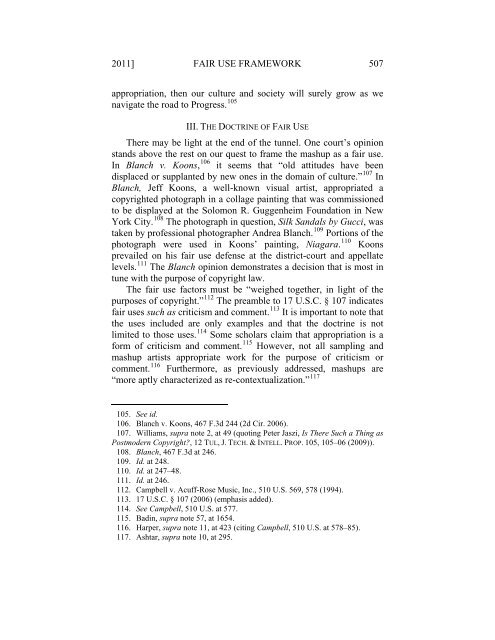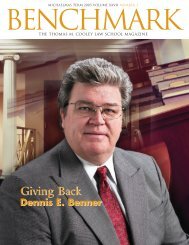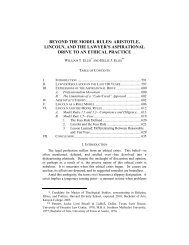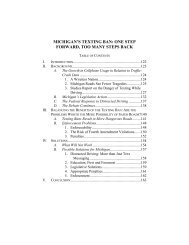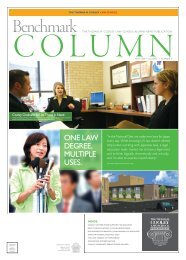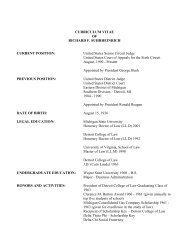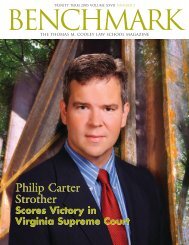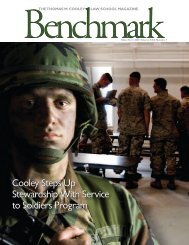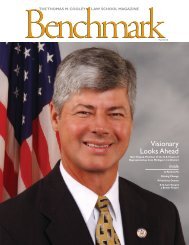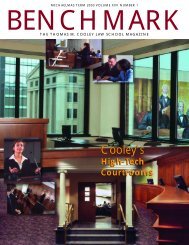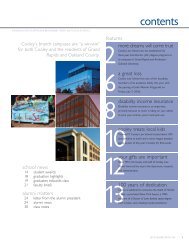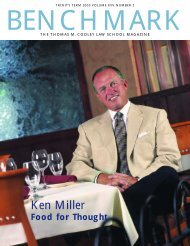Blanch It, Mix It, Mash It - Thomas M. Cooley Law School
Blanch It, Mix It, Mash It - Thomas M. Cooley Law School
Blanch It, Mix It, Mash It - Thomas M. Cooley Law School
Create successful ePaper yourself
Turn your PDF publications into a flip-book with our unique Google optimized e-Paper software.
2011] FAIR USE FRAMEWORK 507<br />
appropriation, then our culture and society will surely grow as we<br />
navigate the road to Progress. 105<br />
III. THE DOCTRINE OF FAIR USE<br />
There may be light at the end of the tunnel. One court’s opinion<br />
stands above the rest on our quest to frame the mashup as a fair use.<br />
In <strong>Blanch</strong> v. Koons, 106 it seems that “old attitudes have been<br />
displaced or supplanted by new ones in the domain of culture.” 107 In<br />
<strong>Blanch</strong>, Jeff Koons, a well-known visual artist, appropriated a<br />
copyrighted photograph in a collage painting that was commissioned<br />
to be displayed at the Solomon R. Guggenheim Foundation in New<br />
York City. 108 The photograph in question, Silk Sandals by Gucci, was<br />
taken by professional photographer Andrea <strong>Blanch</strong>. 109 Portions of the<br />
photograph were used in Koons’ painting, Niagara. 110 Koons<br />
prevailed on his fair use defense at the district-court and appellate<br />
levels. 111 The <strong>Blanch</strong> opinion demonstrates a decision that is most in<br />
tune with the purpose of copyright law.<br />
The fair use factors must be “weighed together, in light of the<br />
purposes of copyright.” 112 The preamble to 17 U.S.C. § 107 indicates<br />
fair uses such as criticism and comment. 113 <strong>It</strong> is important to note that<br />
the uses included are only examples and that the doctrine is not<br />
limited to those uses. 114 Some scholars claim that appropriation is a<br />
form of criticism and comment. 115 However, not all sampling and<br />
mashup artists appropriate work for the purpose of criticism or<br />
comment. 116 Furthermore, as previously addressed, mashups are<br />
“more aptly characterized as re-contextualization.” 117<br />
105. See id.<br />
106. <strong>Blanch</strong> v. Koons, 467 F.3d 244 (2d Cir. 2006).<br />
107. Williams, supra note 2, at 49 (quoting Peter Jaszi, Is There Such a Thing as<br />
Postmodern Copyright?, 12 TUL, J. TECH. & INTELL. PROP. 105, 105–06 (2009)).<br />
108. <strong>Blanch</strong>, 467 F.3d at 246.<br />
109. Id. at 248.<br />
110. Id. at 247–48.<br />
111. Id. at 246.<br />
112. Campbell v. Acuff-Rose Music, Inc., 510 U.S. 569, 578 (1994).<br />
113. 17 U.S.C. § 107 (2006) (emphasis added).<br />
114. See Campbell, 510 U.S. at 577.<br />
115. Badin, supra note 57, at 1654.<br />
116. Harper, supra note 11, at 423 (citing Campbell, 510 U.S. at 578–85).<br />
117. Ashtar, supra note 10, at 295.


